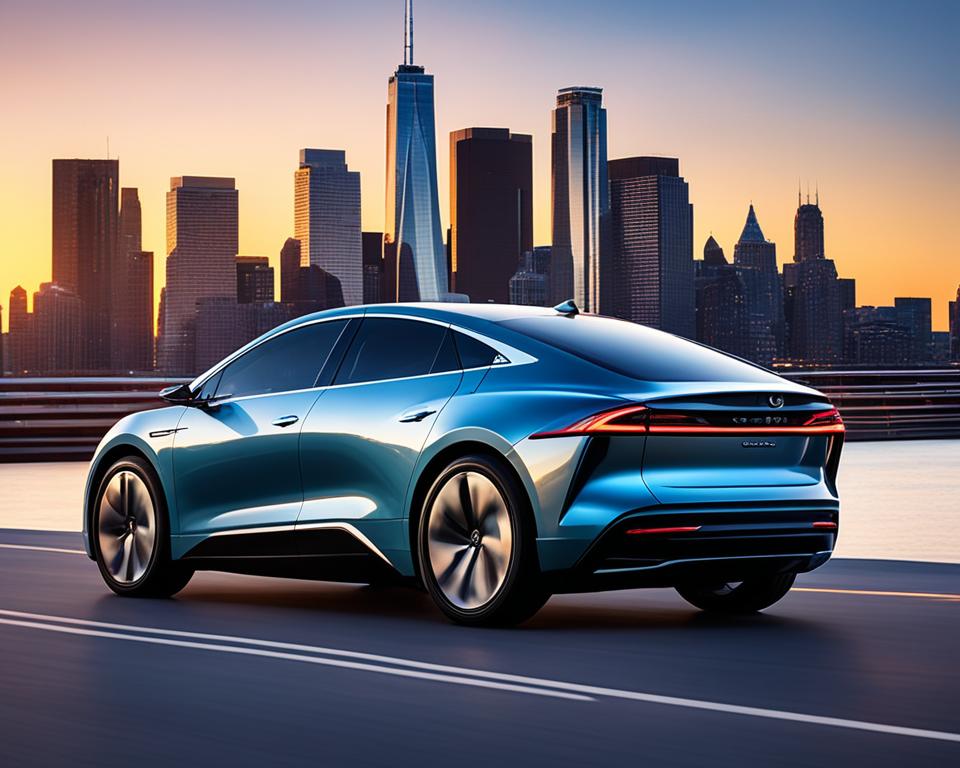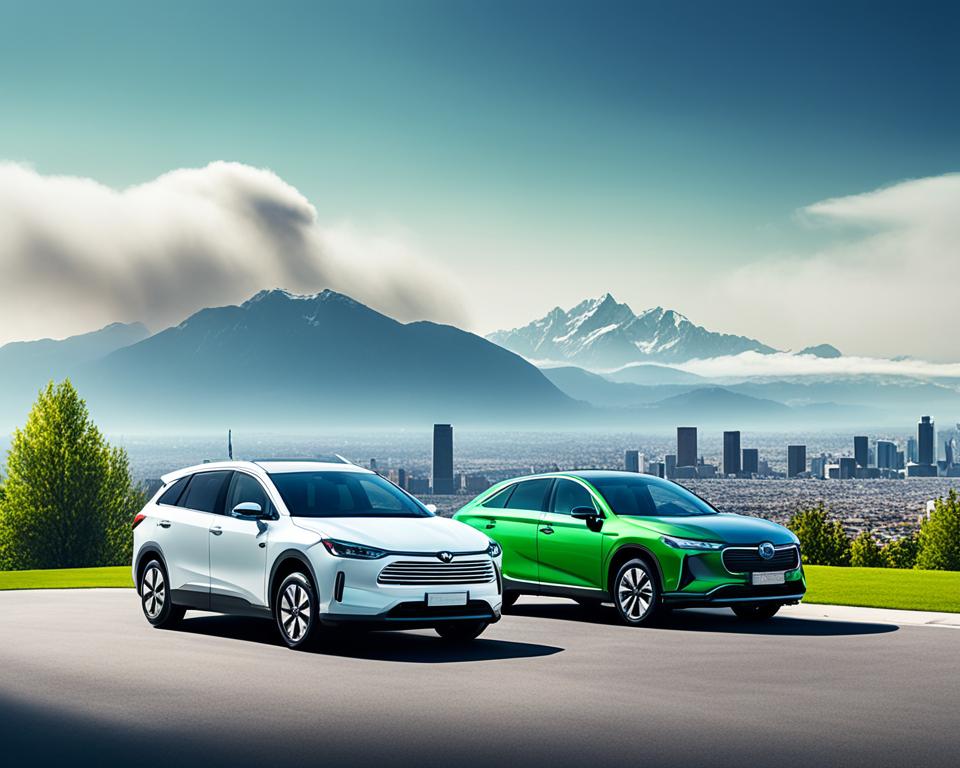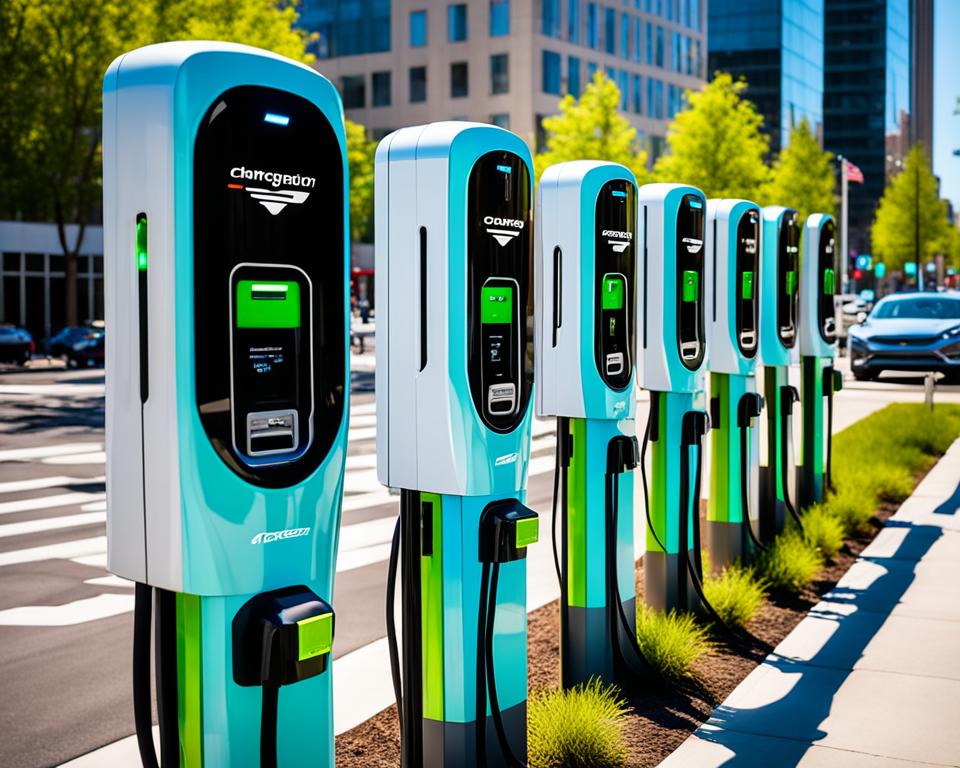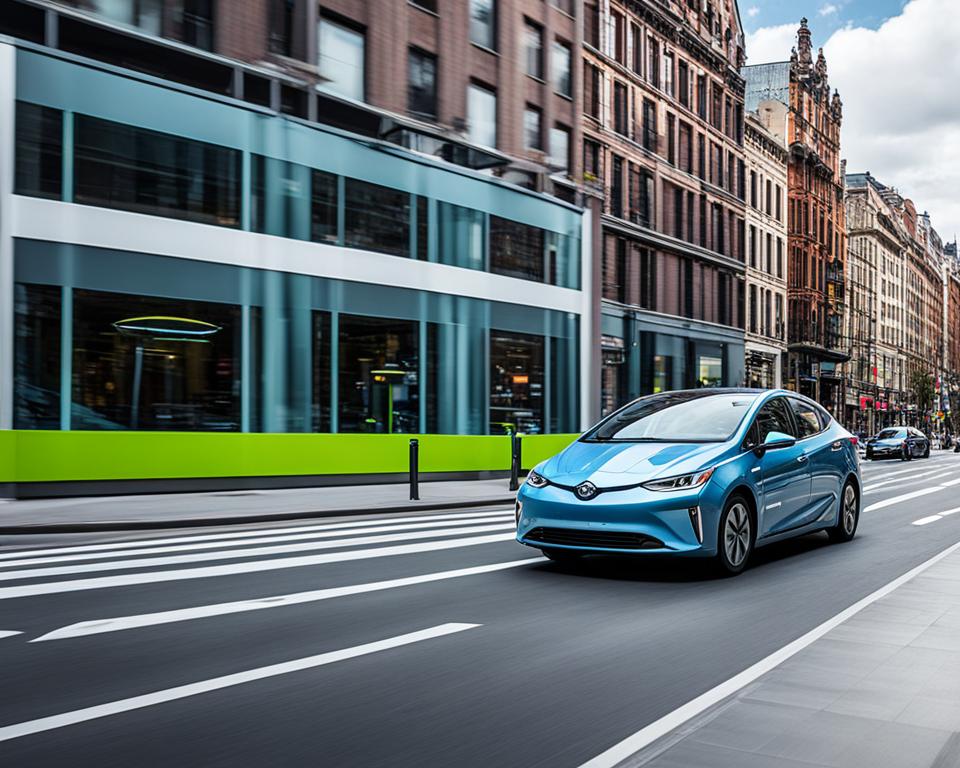Hybrid vs Plug In Hybrid Cars As the automotive industry evolves, hybrid electric vehicles (HEVs) and plug-in hybrid electric vehicles (PHEVs) have emerged as popular alternatives to traditional gasoline-powered cars. Both options offer improved fuel efficiency and reduced greenhouse gas emissions, making them appealing choices for eco-conscious consumers seeking more sustainable mobility solutions. However, the distinctions between these two technologies can be nuanced, and understanding their unique characteristics is crucial for making an informed decision.
Hybrid vs Plug In Hybrid Cars share the common feature of combining an internal combustion engine with an electric motor and a battery pack. This integration allows for improved fuel efficiency and eco-friendly transportation compared to conventional gasoline vehicles. But the way they harness electric power and the need for external charging infrastructure sets them apart in significant ways.
In this comprehensive article, we will delve into the intricate differences between hybrid and plug-in hybrid vehicles, exploring their respective advantages, drawbacks, and the technological advancements shaping the future of sustainable mobility. By understanding the unique characteristics of these alternative-fuel options, you can make a well-informed decision that aligns with your driving needs, lifestyle, and environmental concerns.
Key Takeaways Hybrid vs Plug In Hybrid Cars
- Hybrid vs Plug In Hybrid Cars both combine a gas-powered engine with an electric motor, but they differ in their reliance on electric power and the need for external charging.
- Hybrid cars primarily rely on the gas engine, with the electric motor providing supplementary power, while Hybrid vs Plug In Hybrid Cars can operate in all-electric mode for short distances.
- Plug-in hybrids offer greater fuel efficiency and lower greenhouse gas emissions than traditional hybrids, but they require access to charging infrastructure.
- Hybrid vs Plug In Hybrid Cars are eligible for various tax incentives and rebates, helping to offset their typically higher upfront costs.
- Advancements in battery technology and automotive innovation are driving the growth of hybrid, plug-in hybrid, and fully electric vehicles as sustainable mobility solutions.
Understanding the Differences
The automotive landscape has evolved significantly in recent years, with hybrid vehicles, Hybrid vs Plug In Hybrid Cars (PHEVs), and all-electric cars emerging as compelling alternatives to traditional gas-powered cars. Each of these options offers unique advantages and trade-offs that are worth exploring in greater detail.
Hybrid Cars: An Overview
Hybrid cars combine a gas-powered internal combustion engine (ICE) with an electric motor and a battery pack. The electric motor assists the gas engine, improving the vehicle’s overall fuel efficiency. The battery is recharged through the car’s regenerative braking system, which captures energy during deceleration and braking to recharge the battery. This combination of technologies allows hybrid vehicles to deliver superior fuel economy compared to their gasoline-only counterparts.
Hybrid vs Plug In Hybrid Cars: Bridging the Gap
Plug-in hybrid electric vehicles (PHEVs) also have a gas engine and an electric motor, but they feature a larger battery pack that provides more all-electric driving range, typically 20 to 40 miles. PHEVs can operate solely on electric power for short distances before the gas engine takes over, providing a backup power source and eliminating “range anxiety” that some buyers experience with fully electric vehicles. This versatility makes PHEVs an attractive option for those seeking the benefits of electric driving with the reassurance of a gas engine backup.
Electric Cars: The Future of Sustainable Mobility
Battery electric vehicles (BEVs), or simply electric cars, rely entirely on an electric motor and battery pack for propulsion, eliminating the need for a gas engine. They produce zero direct emissions, making them the most environmentally friendly option. However, the success of electric vehicles largely depends on the continued expansion of public charging infrastructure to address range concerns and enable convenient charging for drivers.
Hybrid Cars: Pros and Cons
Hybrid cars offer a compelling balance of advantages and drawbacks that are worth considering. Let’s explore the key benefits and limitations of this eco-friendly technology.
Advantages of Hybrid vs Plug In Hybrid Cars
One of the primary advantages of hybrid cars is their improved fuel efficiency compared to traditional gasoline-powered vehicles. By combining a gas-powered engine with an electric motor, hybrids are able to achieve significantly better gas mileage, particularly in stop-and-go city driving. This translates to reduced fuel costs and lower greenhouse gas emissions, contributing to a more sustainable mode of transportation.
Another key benefit of hybrid cars is the convenience of not requiring external charging. The battery pack in a hybrid vehicle is recharged through the car’s regenerative braking system, which captures energy during deceleration and braking. This eliminates the need for owners to seek out and use dedicated charging stations, providing a hassle-free driving experience.
Drawbacks of Hybrid vs Plug In Hybrid Cars
Despite the advantages, hybrid cars do have some drawbacks. While they offer improved efficiency over gas-only vehicles, hybrids still rely on a gasoline engine and cannot operate in a pure electric-only mode. This means they do not provide the same zero-emission driving experience as a fully electric vehicle.
Additionally, hybrid cars tend to have a higher upfront cost compared to their non-hybrid counterparts. This premium can be challenging for some consumers, particularly if the tax incentives and rebates available for hybrids are more limited than those offered for plug-in hybrid or all-electric vehicles.
Another potential drawback is the potential for high replacement costs for the hybrid battery pack if it needs to be serviced outside of the vehicle’s warranty period. This can be a significant expense for owners to consider over the long-term ownership of the vehicle.

Hybrid vs Plug In Hybrid Cars: Advantages and Disadvantages
Plug-in hybrid electric vehicles offer several advantages over traditional hybrids. PHEVs provide an all-electric driving range, typically 20 to 40 miles, which allows for zero-emission commuting for short trips. This can significantly improve overall fuel efficiency, especially for drivers who can regularly recharge the battery. PHEVs also typically qualify for attractive tax credits and incentives that can help offset the higher upfront cost.
Benefits of Hybrid vs Plug In Hybrid Cars
The all-electric driving range of Hybrid vs Plug In Hybrid Cars can provide a tangible electric-only range for daily commutes, reducing reliance on the gas-powered engine and leading to improved fuel efficiency. Additionally, the availability of tax incentives for PHEVs can make them a more affordable option for eco-conscious consumers.
Limitations of Plug-In Hybrid Vehicles
The primary limitations of plug-in hybrids include their limited all-electric range, the need for regular charging to maximize efficiency, and their higher purchase price compared to standard hybrids. Depending on the model, PHEVs may only provide 20 to 40 miles of electric-only driving before the gas engine must take over. This may not be enough for some drivers with longer commutes. Furthermore, the charging requirements can be inconvenient for those without access to reliable charging infrastructure.
Comparing Fuel Efficiency
Both hybrid and plug-in hybrid vehicles offer superior fuel efficiency compared to traditional gasoline-powered cars. Hybrids typically achieve significantly better gas mileage in stop-and-go city driving, as the electric motor can power the vehicle at low speeds and the regenerative braking system recharges the battery.
| Vehicle Type | Fuel Efficiency (MPG) |
|---|---|
| Hybrid | 45-55 MPG |
| Plug-in Hybrid | 55-95 MPG (electric-only range dependent) |
| Gasoline-Powered | 25-35 MPG |
The table above highlights the fuel efficiency advantages of hybrid and plug-in hybrid vehicles compared to traditional gasoline-powered cars. Plug-in hybrids, in particular, can achieve impressive gas mileage ratings, depending on their all-electric driving range and the driver’s ability to regularly recharge the battery.
Environmental Impact: Emissions Reduction
Hybrid and plug-in hybrid vehicles play a crucial role in reducing tailpipe emissions and promoting more eco-friendly transportation. By combining an internal combustion engine with an electric motor, these advanced vehicles significantly lower greenhouse gas emissions compared to traditional gasoline-powered cars.
Hybrid cars achieve this by seamlessly transitioning between the gas engine and the electric motor, relying on both power sources to optimize emissions reduction and fuel efficiency. Meanwhile, plug-in hybrid electric vehicles (PHEVs) can operate in all-electric mode for short distances, completely eliminating direct emissions during those periods and offering the best of both worlds.

As environmental concerns continue to shape consumer preferences and government regulations, the growing popularity of hybrid and plug-in hybrid vehicles underscores their pivotal role in the transition towards more sustainable mobility. By reducing overall greenhouse gas emissions, these innovative technologies are helping to pave the way for a cleaner, greener future.
Hybrid vs Plug In Hybrid Cars
While hybrid vehicles and Hybrid vs Plug In Hybrid Cars share some fundamental similarities, there are distinct differences between the two technologies that set them apart. Both utilize a combination of an internal combustion engine and an electric motor, but the way they are powered and recharged is where the key distinctions lie.
At their core, hybrid vehicles rely on the seamless integration of a gas-powered engine and an electric motor to deliver improved fuel efficiency and lower emissions compared to traditional gasoline-powered cars. The electric motor provides an extra boost of power, allowing the gas engine to operate at more efficient rpm levels, while the regenerative braking system recharges the onboard battery.
Hybrid vs Plug In Hybrid Cars, on the other hand, take the hybrid concept a step further by incorporating a larger battery pack that can be recharged from an external power source. This allows PHEVs to operate in an all-electric mode for short distances, typically ranging from 20 to 40 miles, before the gas engine is needed to extend the driving range. This all-electric capability provides a more eco-friendly commuting option for many drivers.
The fundamental similarities between hybrid vehicles and plug-in hybrid vehicles lie in their ability to leverage both gasoline and electric power sources, reducing overall fuel consumption and emissions. However, the differences in battery size, charging requirements, and all-electric range set them apart and cater to the unique needs and preferences of various consumers.
Driving Range and Charging Infrastructure
The all-electric driving range of Hybrid vs Plug In Hybrid Cars electric vehicles (PHEVs) typically falls between 20 to 40 miles, depending on the model and battery capacity. This provides sufficient electric range for many daily commutes and short trips, but may not be enough for drivers with longer distances to cover. In contrast, fully electric vehicles (EVs) offer a more extensive all-electric range, making them better suited for those with higher mileage requirements.
Charging Options and Availability
Plug-in hybrid electric vehicles can be recharged using regular household outlets, but this “Level 1” charging method is relatively slow, adding only a few miles of battery capacity per hour. For faster charging, PHEVs can utilize “Level 2” charging stations, which are often installed in homes, workplaces, and public locations. The availability of charging infrastructure, including both home and public charging stations, is a crucial consideration when comparing PHEV vs EV options.

As the demand for Hybrid vs Plug In Hybrid Cars, and electric vehicles continues to grow, the expansion of comprehensive charging infrastructure will play a vital role in facilitating the widespread adoption of these more sustainable transportation solutions.
Cost Considerations Hybrid vs Plug In Hybrid Cars
When it comes to alternative-fuel vehicles, the purchase price and ongoing costs are important factors to consider. Plug-in hybrid electric vehicles (PHEVs) typically have a higher upfront cost than their hybrid counterparts, with prices often rivaling those of fully electric vehicles (EVs). However, this initial premium can be mitigated by the various tax incentives, rebates, and other financial incentives available to PHEV and EV buyers.
Purchase Price and Incentives
The purchase price of a PHEV may be higher than a traditional hybrid, but buyers can take advantage of federal, state, and local incentives to offset this difference. These incentives can include tax credits, rebates, and other financial benefits that can significantly reduce the overall cost of ownership. By carefully researching and taking advantage of these tax incentives and rebates, PHEV buyers can potentially achieve cost parity or even savings compared to a standard hybrid vehicle.
Operating and Maintenance Costs
While PHEVs may have a higher upfront cost than traditional hybrids, they can potentially offer lower operating costs and maintenance expenses over the life of the vehicle. The electric-only driving mode of a PHEV can translate to significant fuel savings, especially for drivers with shorter commutes who can regularly recharge the battery. Additionally, electric motors have fewer moving parts than internal combustion engines, which can lead to lower maintenance costs over time.
Technological Advancements
Advancements in battery technology are a key driver behind the increasing popularity and feasibility of hybrid, plug-in hybrid, and electric vehicles. Improvements in energy density, charging speed, and overall range have made these alternative-fuel vehicles more practical and appealing to a wider range of consumers.
Battery Technology Improvements
The automotive innovation and vehicle electrification witnessed in recent years have been fueled by significant breakthroughs in battery technology. Automakers are continuously investing in research and development to enhance the performance and reliability of their battery systems, addressing consumer concerns over range and charging capabilities.
Automotive Innovation Hybrid vs Plug In Hybrid Cars
The shift towards Hybrid vs Plug In Hybrid Cars, and electric vehicles is also being driven by wider automotive innovation and changing government regulations and emissions standards. Automakers are heavily investing in electrification technologies to meet increasingly stringent environmental mandates and respond to consumer demand for more sustainable transportation options.

Choosing the Right Option
When deciding between a hybrid, plug-in hybrid, or fully electric vehicle, it’s important to carefully assess your specific driving needs and habits. Factors to consider include your average commute length, access to reliable charging infrastructure, and the types of trips you typically make.
Assessing Your Driving Needs
If your daily commute is relatively short, a plug-in hybrid with a decent electric-only range may be the perfect fit, allowing you to enjoy the benefits of electric driving for your daily needs while having the gas-powered engine as a backup for longer trips. On the other hand, if your driving demands more consistent long-distance travel, a traditional hybrid or even a fully electric vehicle with a robust battery capacity may be the better choice.
The availability and accessibility of charging options in your area is another crucial factor. If you have the ability to charge your vehicle at home or at your workplace, a plug-in hybrid or electric car becomes a more viable option. However, if your access to charging infrastructure is limited, a hybrid without the need for external charging may be the more practical solution.
Lifestyle and Preferences Hybrid vs Plug In Hybrid Cars
Beyond the practical considerations of your driving needs, personal preferences and lifestyle factors can also play a significant role in your vehicle selection. Some buyers may prioritize an environmentally friendly, zero-emission option, while others may value performance and driving dynamics over maximum efficiency.
For those who are concerned about their environmental impact, a fully electric vehicle or a plug-in hybrid with a substantial electric-only range may be the most appealing choice. Conversely, drivers who prioritize power and acceleration may find that a hybrid with a robust gas engine provides the desired driving experience.
Ultimately, the decision between a hybrid, plug-in hybrid, or electric vehicle boils down to carefully balancing your driving needs, lifestyle preferences, and personal priorities to find the best fit for your unique circumstances.

Conclusion Hybrid vs Plug In Hybrid Cars
As the automotive industry continues to evolve, hybrid cars, plug-in hybrids, and electric vehicles are becoming increasingly prevalent options for eco-conscious consumers seeking more sustainable transportation choices. Each technology offers its own unique advantages and trade-offs, making it essential for buyers to carefully evaluate their driving needs, lifestyle, and personal preferences to determine the best fit, Hybrid vs Plug In Hybrid Cars.
Hybrid vs Plug In Hybrid Cars, Whether you’re drawn to the improved fuel efficiency of hybrid cars, the extended electric-only range of plug-in hybrids, or the zero-emission performance of fully electric vehicles, the future of sustainable transportation is rapidly unfolding. By staying informed about the latest advancements in battery technology, charging infrastructure, and government incentives, you can make a well-informed decision that aligns with your values and driving requirements, Hybrid vs Plug In Hybrid Cars.
Ultimately, the choice between Hybrid vs Plug In Hybrid Cars, and electric vehicles will depend on your unique circumstances and priorities. By weighing the pros and cons of each option, you can confidently select the transportation solution that best meets your needs and contributes to a more sustainable future, Hybrid vs Plug In Hybrid Cars.
FAQ
What are the key differences between hybrid cars and plug-in hybrid electric vehicles (PHEVs)?
Hybrid cars combine a gas-powered internal combustion engine (ICE) with an electric motor and a battery pack, while PHEVs feature a larger battery pack that provides more all-electric driving range, typically 20 to 40 miles. PHEVs can operate solely on electric power for short distances before the gas engine takes over, providing a backup power source, Hybrid vs Plug In Hybrid Cars.
What are the advantages of hybrid cars?
Hybrid cars offer improved fuel efficiency compared to traditional gasoline-powered vehicles, reduced emissions that contribute to better air quality, and the convenience of not requiring external charging. The regenerative braking system in hybrids helps recharge the battery, improving overall energy efficiency, Hybrid vs Plug In Hybrid Cars.
What are the drawbacks of hybrid cars?
Hybrid cars still rely on a gasoline engine and cannot operate in an all-electric mode. They also tend to be more expensive than their non-hybrid counterparts, and they may not qualify for the same generous tax incentives and rebates available for plug-in hybrid and fully electric vehicles. The cost of replacing the hybrid battery pack can also be high if it needs to be done outside of the warranty period, Hybrid vs Plug In Hybrid Cars.
What are the benefits of plug-in hybrid electric vehicles (PHEVs)?
PHEVs provide an all-electric driving range, typically 20 to 40 miles, which allows for zero-emission commuting for short trips. This can significantly improve overall fuel efficiency, especially for drivers who can regularly recharge the battery. PHEVs also typically qualify for attractive tax credits and incentives that can help offset the higher upfront cost.
What are the limitations of plug-in hybrid electric vehicles (PHEVs)?
The primary limitations of plug-in hybrids include their limited all-electric range, the need for regular charging to maximize efficiency, and their higher purchase price compared to standard hybrids. Depending on the model, PHEVs may only provide 20 to 40 miles of electric-only driving before the gas engine must take over, which may not be enough for some drivers with longer commutes.
How do hybrid and plug-in hybrid vehicles compare in terms of fuel efficiency?
Both hybrid and plug-in hybrid vehicles offer superior fuel efficiency compared to traditional gasoline-powered cars. Hybrids typically achieve significantly better gas mileage in stop-and-go city driving, as the electric motor can power the vehicle at low speeds and the regenerative braking system recharges the battery. PHEVs can provide even greater fuel efficiency when driven primarily in their all-electric mode for short trips, Hybrid vs Plug In Hybrid Cars.
How do hybrid and plug-in hybrid vehicles differ in their environmental impact?
Hybrid and plug-in hybrid vehicles produce significantly lower tailpipe emissions than traditional gasoline-powered cars, making them more environmentally friendly options. Hybrids reduce greenhouse gas emissions by relying on both the electric motor and the gas engine, while PHEVs can operate in all-electric mode for short distances, eliminating direct emissions altogether during those periods.
What factors should I consider when choosing between a hybrid, plug-in hybrid, or fully electric vehicle?
When deciding between a hybrid, plug-in hybrid, or fully electric vehicle, it’s important to carefully assess your specific driving needs and habits, including your average commute length, access to reliable charging infrastructure, and the types of trips you typically make. Personal preferences and lifestyle factors, such as environmental concerns or performance priorities, can also play a role in the decision-making process, Hybrid vs Plug In Hybrid Cars.
Source Links
- https://www.kbb.com/car-advice/hybrid-vs-plug-in-hybrid-what-difference/
- https://www.consumerreports.org/cars/hybrids-evs/how-to-decide-if-a-hybrid-plug-in-hybrid-or-fully-electric-c-a6216376327/
- https://www.rac.co.uk/drive/electric-cars/choosing/should-i-get-a-hybrid-plug-in-hybrid-or-electric-car/
